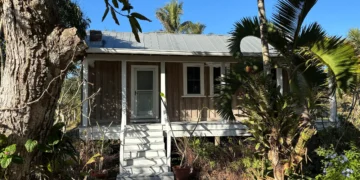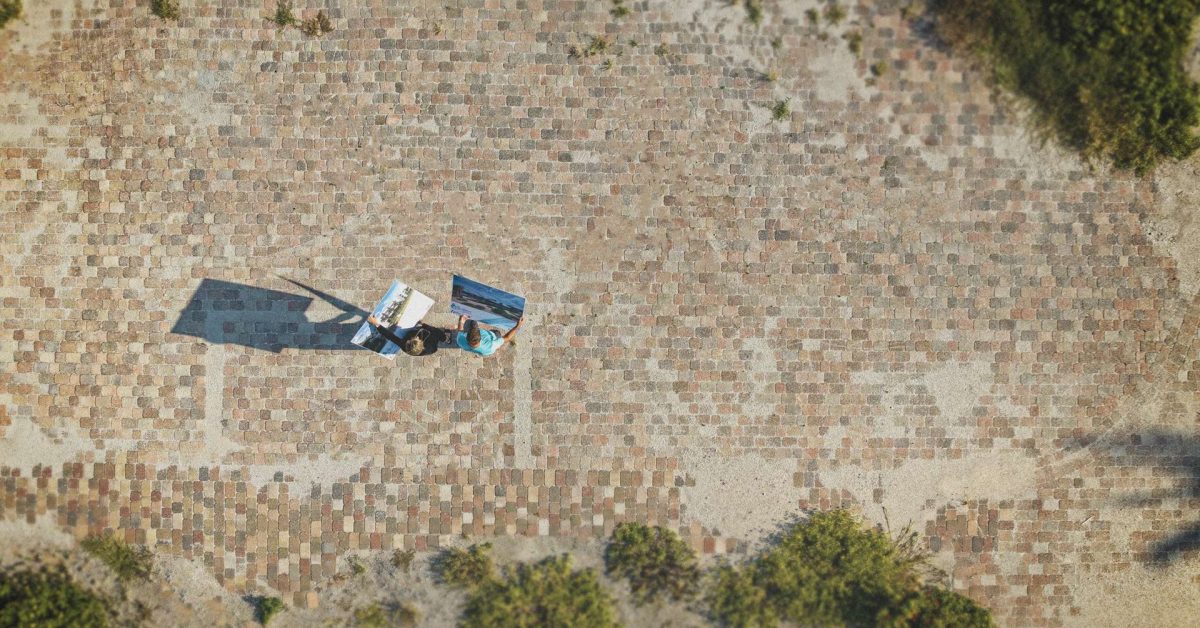Sean Niesel’s grandparents purchased Shalimar Cottages & Motel on Sanibel in 2005. Their original plan was to tear everything down and build condos, but they fell in love with the property the way it was.
Niesel got married at Shalimar and joined the family business about five years ago. But everything changed on Sept. 28, 2022, when Hurricane Ian swept through and destroyed every structure on the site.
“We had a good thing going,” says Niesel. “Then Ian wiped it completely off the map.”
The family plans to rebuild the longtime lodging option on Sanibel, working with Architecture Joyce Owens in Fort Myers and its namesake principal architect. During her years of overseeing projects on the coast, Owens learned that structures in Southwest Florida need to be both strong and smart. And that approach should help Shalimar Cottages & Motel embark on a new era of business.
“Joyce really thinks of every aspect of building,” says Niesel. “What we plan to build is going to last the test of time.”
Benchmark GC will oversee the project, which is expected to break ground in January and have a 15- to 19-month build time. “Yes, it will look different now,” says Niesel. “But you do what you can to keep things moving in the right direction. Some sacrifices have been made, like moving the buildings farther from the beach, raising the buildings higher, having duplexes instead of single cottages … We are extremely proud of what Joyce Owens has designed, and we feel confident it will withstand the hurricanes that are sure to come.”
As Niesel points out, hurricanes are a fact of life in these parts and a major consideration of living and working on the coast. And whether the storms remain occasional threats or become more frequent and/or intense due to climate change, many people aren’t easily going to give up their waterfront views and easy access to the beach or their favorite fishing spots.
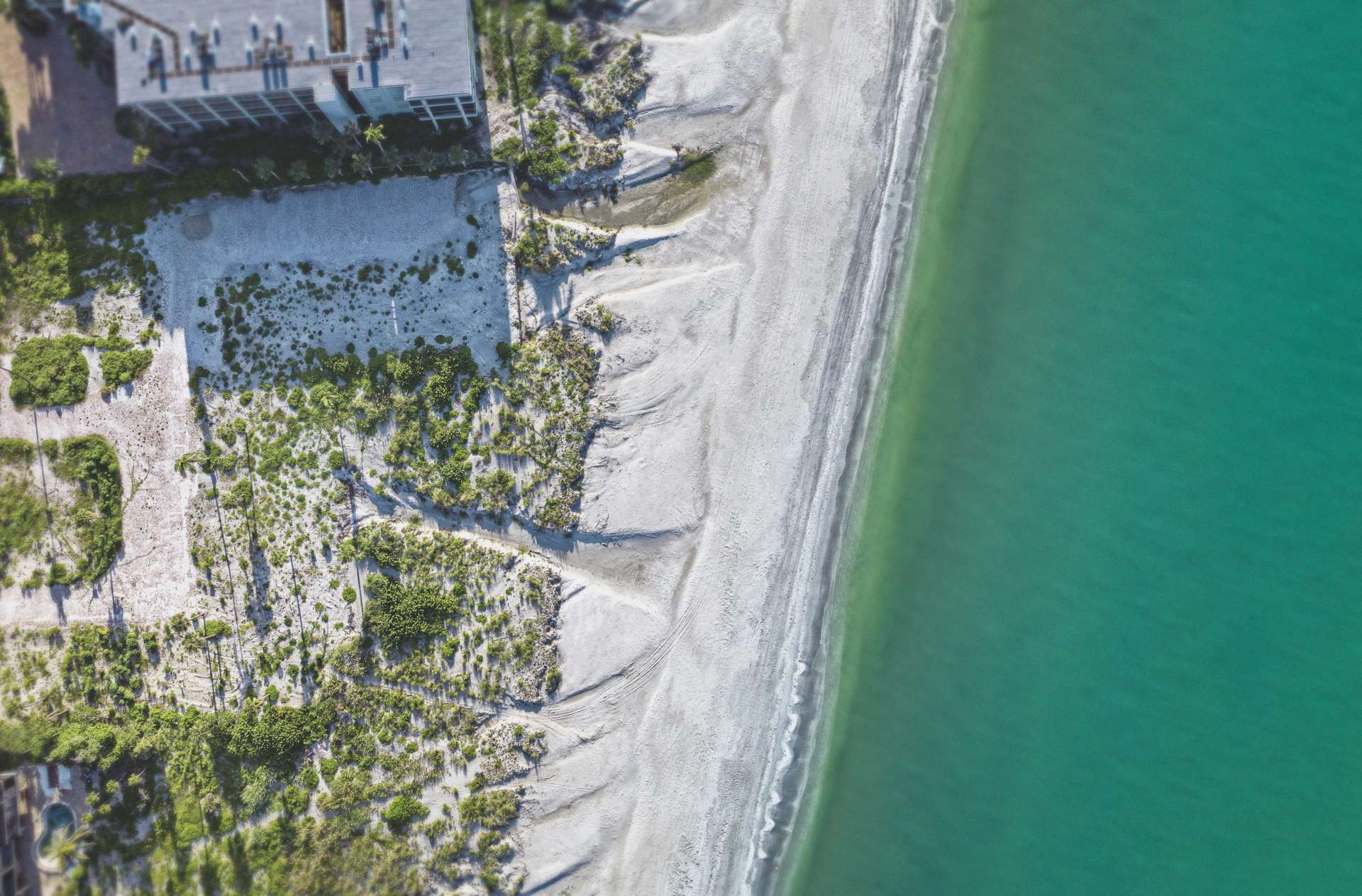 There’s no way to build coastal homes or commercial structures that are 100% guaranteed to withstand every hurricane that comes ashore. But there are many steps property owners can take to build or rebuild the most resilient structures possible.
There’s no way to build coastal homes or commercial structures that are 100% guaranteed to withstand every hurricane that comes ashore. But there are many steps property owners can take to build or rebuild the most resilient structures possible.
“I’m all for being next to the water,” says Owens, who works with both residential and commercial clients. “But I have a mantra now that I’ve been talking about for several years: If you’re going to invest in those locations, then invest so that you’re designing your properties with Mother Nature, and not against Mother Nature.”
That includes taking steps such as designing elevated waterfront homes so they’re structurally perpendicular to the beach. “If you can, build so that water can just flow right underneath,” says Owens. “You’re going to be a lot better than trying to put something in Mother Nature’s way.”
Michael Savarese, a professor of marine and earth sciences at The Water School at Florida Gulf Coast University, says Ian’s storm surge reinforced how important dunes are to the hurricane resiliency of an area. “Dunes are a critical line of defense, the fortress wall, if you will, that stands between the surge and the development behind it,” he says.
Because Southwest Florida’s dunes tend to be smaller than those on the state’s east coast, the protection they offer is more limited, especially if structures are built right up to the approved coastal setback lines. “Our fortress walls are low, so if you build right behind them, you’re at greater risk during times of even moderate surge,” Savarese says.
Learning from past storms is important, and the tougher building codes that began implementation after the devastation of Hurricane Andrew keep proving their worth. Newer, concrete-block buildings tended to withstand Ian’s winds and storm surge better than older, wood-framed structures.
“It’s clear the codes worked [after Ian],” says Mark Stevens, president of Fort Myers–based Stevens Construction, which specializes in health care, commercial and hospitality construction. “If you go to Sanibel and Fort Myers Beach, the structures that were nonconforming to the new codes are the ones that suffered the damage.”
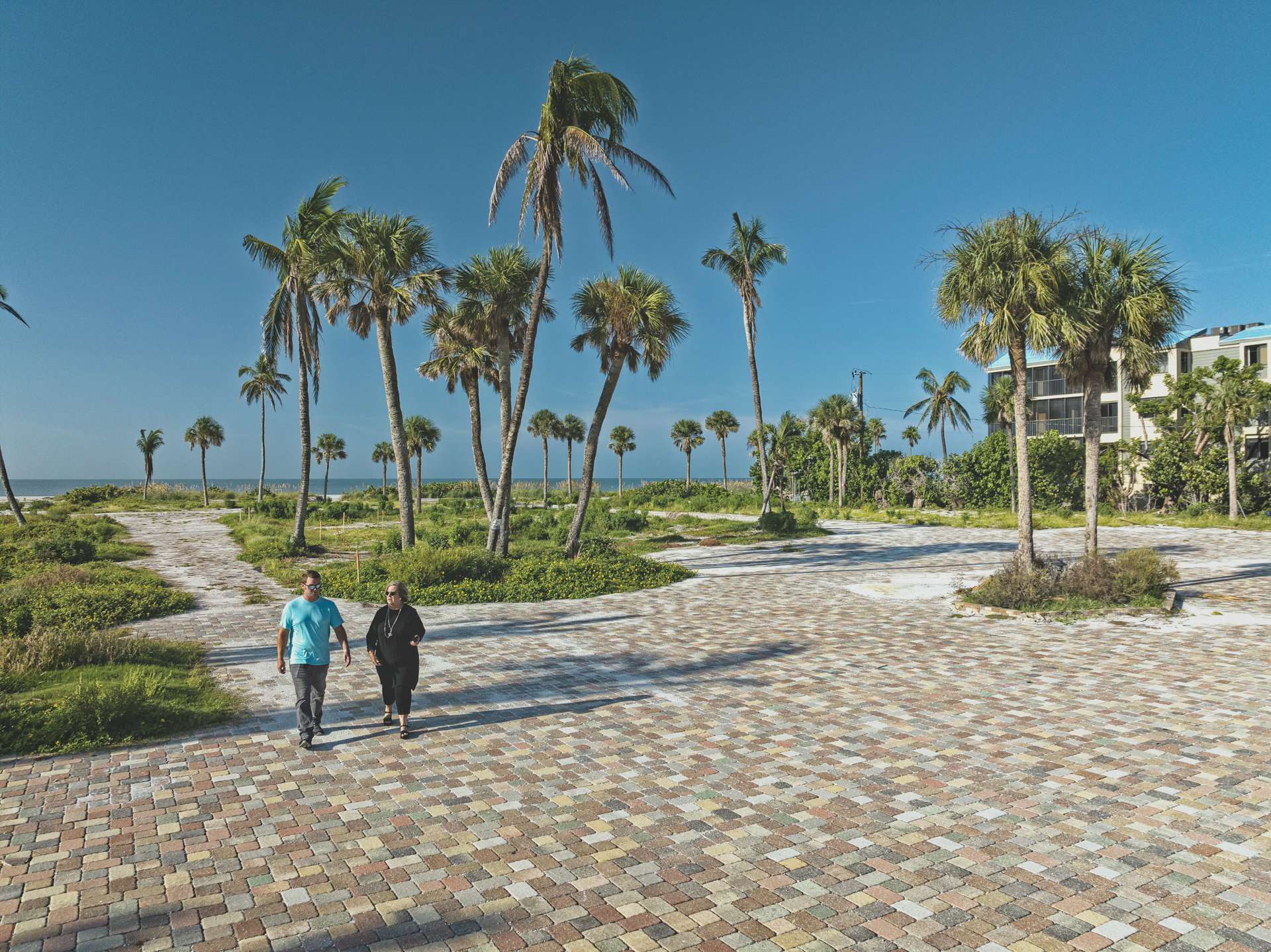 Owens agrees. “It’s always better to build new if you can afford it, instead of investing the money in older wood buildings,” she says. “But if you do renovate, you really want to upgrade to the current codes.”
Owens agrees. “It’s always better to build new if you can afford it, instead of investing the money in older wood buildings,” she says. “But if you do renovate, you really want to upgrade to the current codes.”
Opting for impact-resistant windows and doors, metal roofs and generators placed above the flood plain are basic first steps toward increasing a structure’s hurricane resistance. “There are always ways to harden existing structures, to add shutters to a home that has some age on it or do the same thing with a commercial building,” says Stevens. “If you’ve got a roof that is older and on the verge of needing replacement, do that sooner [rather] than later if you can afford to do that.”
But property owners can take things even further if they have the budget for it. For example, homes built with insulated concrete forms, or ICF, can prove even stronger than those constructed with concrete blocks.
Marc Devisse, founder and president of custom homebuilder and remodeler Tri-Town Construction in Fort Myers, is seeing increasing interest in ICF homes, although it does drive costs up since both the materials and labor required for ICF are more expensive than for concrete block construction. “But the structure of the building is something you can never upgrade in the future,” says Devisse. “If you’re building and you’re on a budget, my recommendation is toning the interior finishes back but not skimping out on the structure.”
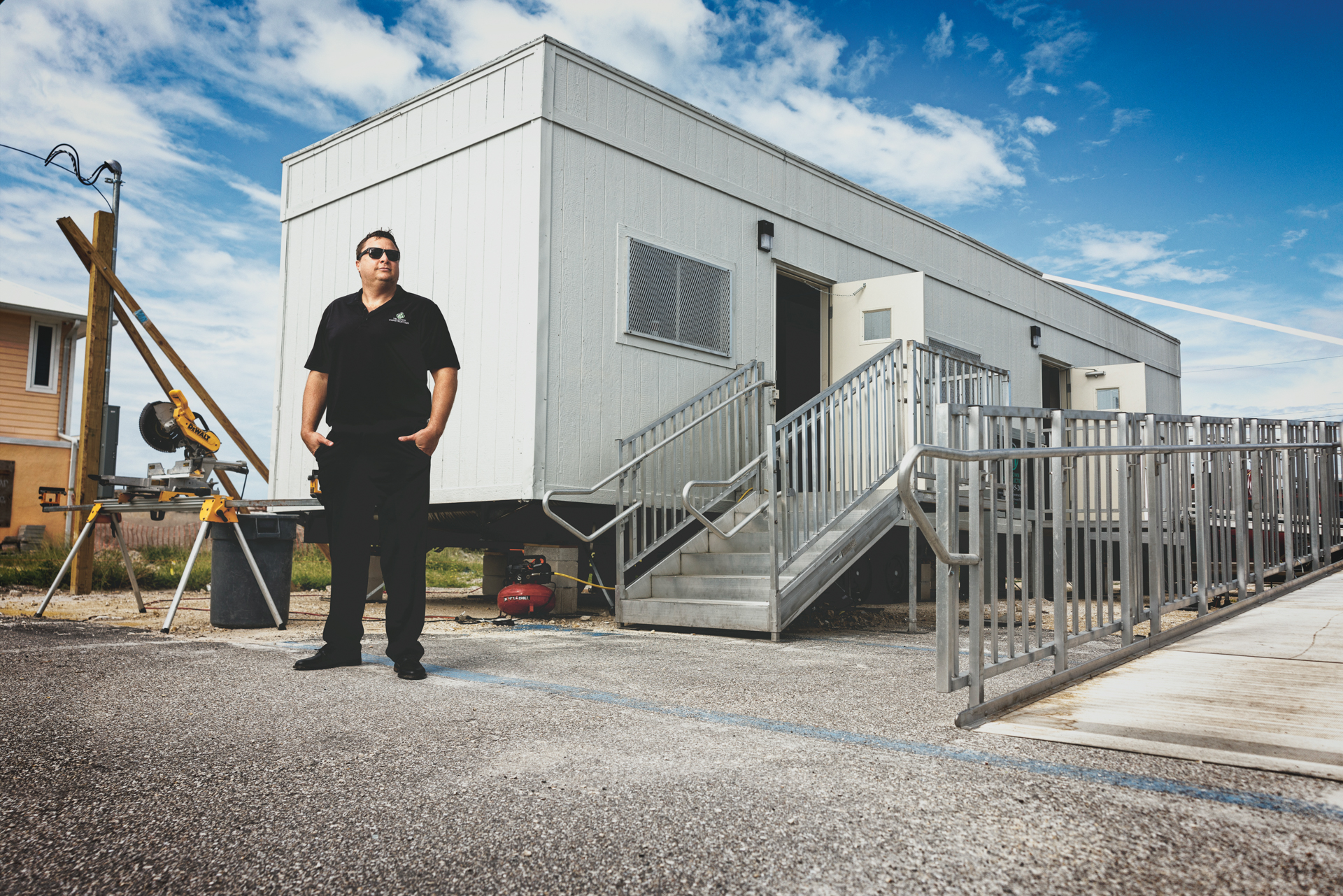 Elevating a structure more than the minimum flood requirement also can increase resiliency. Bill Reiman, vice president and director of construction for Marco Island–based custom homebuilder R.K. Reiman Construction, said some clients are willing to pay the additional costs of raising a home an additional foot for the peace of mind that comes along with it. “Everybody is always going to want to be on the water—you can’t beat it,” he says. “That’s never going to change, so if it requires building the house higher and bringing in more dirt, that’s just what we have to do.”
Elevating a structure more than the minimum flood requirement also can increase resiliency. Bill Reiman, vice president and director of construction for Marco Island–based custom homebuilder R.K. Reiman Construction, said some clients are willing to pay the additional costs of raising a home an additional foot for the peace of mind that comes along with it. “Everybody is always going to want to be on the water—you can’t beat it,” he says. “That’s never going to change, so if it requires building the house higher and bringing in more dirt, that’s just what we have to do.”
After a storm like Ian, there’s a desire to get back to “normal” as quickly as possible, whether that means reopening a business that provides important jobs or services to the community or being able to return to a much-loved family home. And while all of that is important, FGCU’s Savarese hopes everyone in the region also takes time to assess and learn from what transpired.
“In less critical situations, it could be a mistake to rebuild back too quickly, and just put things back to the way they were—and find out five years down the road they’re as susceptible to the problem again in the future,” he says. “Yes, you need to get people back to work; you need to protect their livelihoods and homes and health. But there are other aspects to rebuilding or restoring a community that could be done more thoughtfully and over a longer period of time, so that things are done well.”
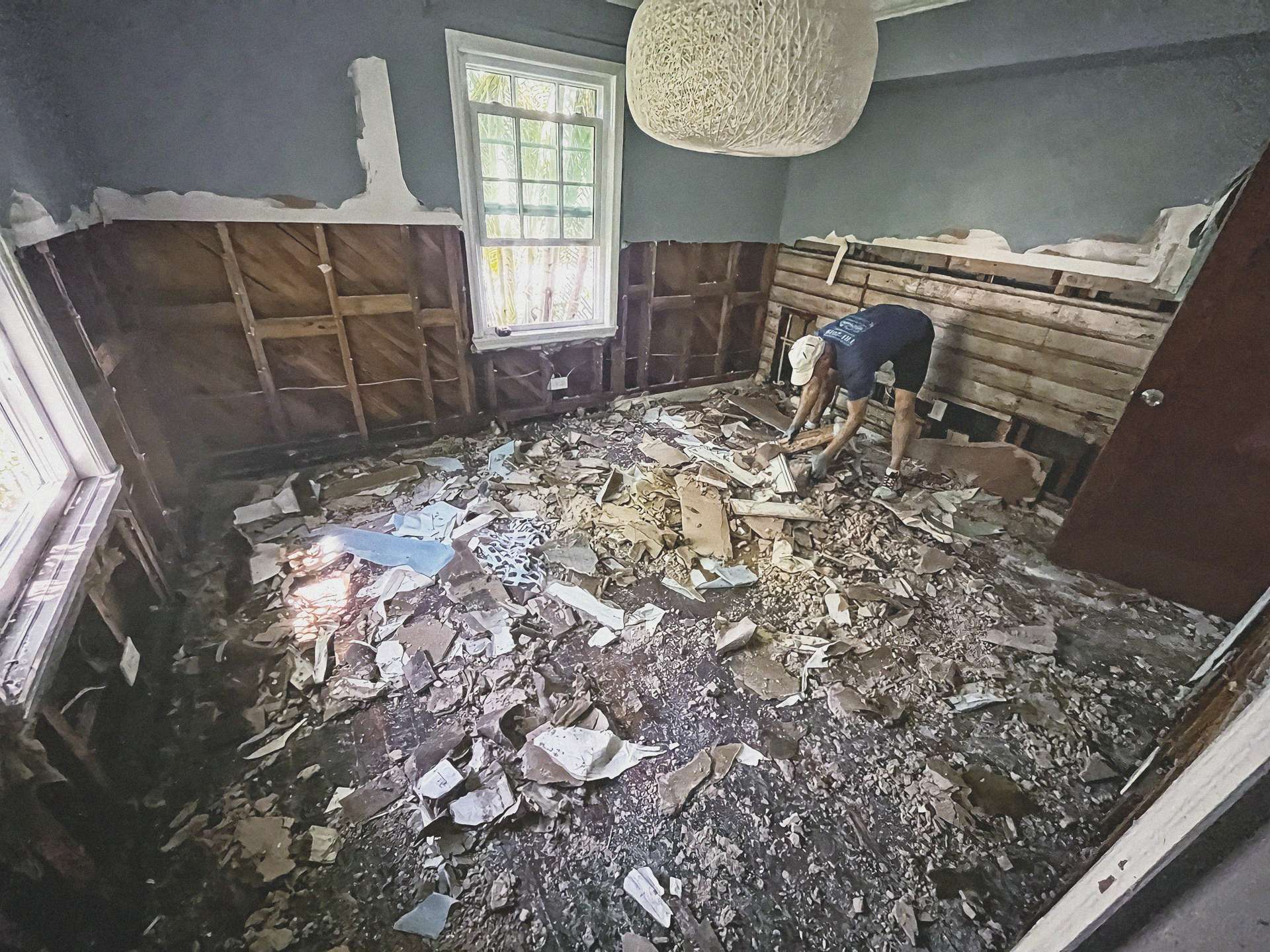 On the inside
On the inside
You’ve got the walls, windows and roof in place. What can you do on the interior of your home or business to help you bounce back quickly after a storm?
Tile or concrete floors can handle water much better than wood. And sometimes that can be a less expensive option than going for hardwood flooring.
But for baseboards and door jambs, you do want to choose solid wood over a less expensive medium-density fiberboard. “An MDF product sort of acts like a sponge when water touches it,” says Chris Hensley, vice president of Theory Design in Estero, which offers residential and commercial design services. “You’re much more likely to be able to remove and reinstall real wood versus an MDF product.”
Instead of opting for cabinetry that goes all the way to the floor, Hensley recommends having cabinets built with metal or plastic legs that can be covered with what’s called a toe kick, something that’s only a small markup in price. “If you had an inch or two of water [after a storm], you can throw away the toe kick that covers those legs and air it all out,” he says. “And you don’t have all of your cabinets soaking up water just because you took in a half an inch of water. So many people only take in a little bit of water, so you can preserve an entire set of cabinets like that.”
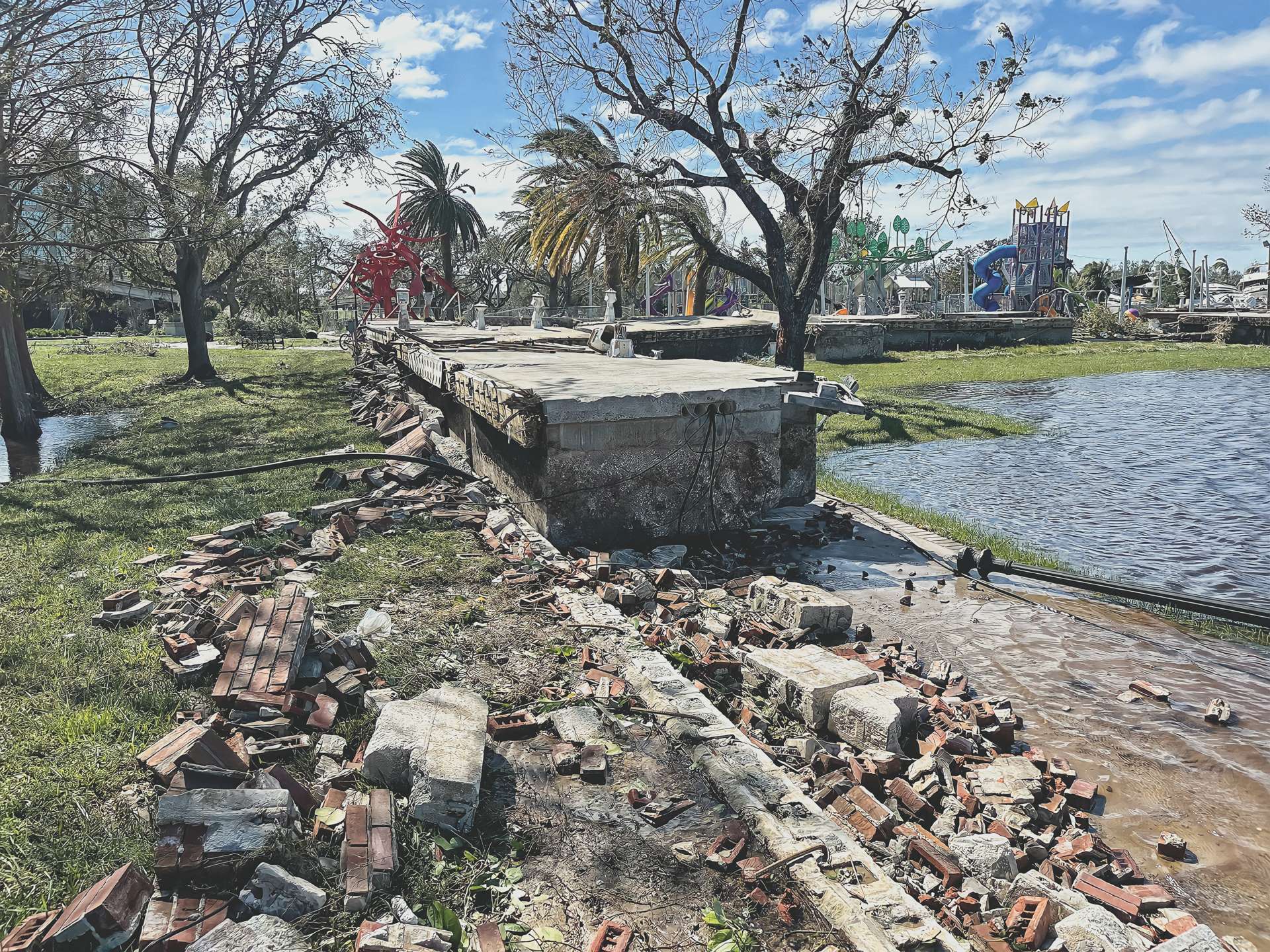 The same kind of thinking goes for upholstered furniture. Choosing a sofa or chair with legs instead of a skirt that goes all the way to the floor can pay off should your home or business take on a small amount of water.
The same kind of thinking goes for upholstered furniture. Choosing a sofa or chair with legs instead of a skirt that goes all the way to the floor can pay off should your home or business take on a small amount of water.
And washable performance fabrics that resist mold and water aren’t just for the lanai. “Everyone always thought of something like Sunbrella fabrics as being a little more plastic-y or tougher feeling or as an outdoor-only fabric,” says Hensley. “But now they are making performance fabrics that would be indistinguishable from your typical interior fabrics.”
– Beth Luberecki

